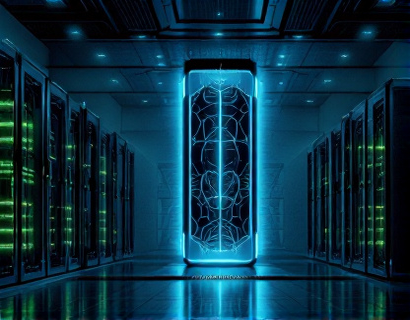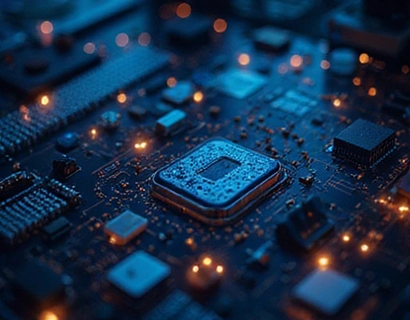Blockchain-Enhanced Registry Software: Revolutionizing Data Management with Security, Transparency, and Efficiency
In the rapidly evolving landscape of data management, the integration of blockchain technology has emerged as a transformative force, offering unparalleled security, transparency, and efficiency. This article delves into the profound impact of blockchain-enabled registry software, designed to revolutionize how professionals and enthusiasts approach data management. By leveraging the inherent properties of blockchain, such as immutability and decentralization, this software not only streamlines registry processes but also builds trust and accountability across various sectors.
Understanding Blockchain Technology in Registry Management
To fully appreciate the benefits of blockchain-enhanced registry software, it is essential to understand the fundamental principles of blockchain technology. At its core, a blockchain is a distributed ledger that records transactions across multiple computers in such a way that the registered transactions cannot be altered retroactively. This technology ensures data integrity and security through cryptographic hashing and consensus mechanisms.
In the context of registry management, blockchain provides a robust framework for managing and verifying data. Each entry in the registry is represented as a block, containing a cryptographic hash of the previous block, a timestamp, and transaction data. This chain of blocks forms an unbreakable link, making it nearly impossible to tamper with any data without detection.
Enhanced Security Features
Security is paramount in registry management, and blockchain technology addresses this need with several innovative features. One of the most significant advantages is the immutability of data. Once a transaction is recorded on the blockchain, it cannot be altered or deleted. This ensures that historical data remains intact and verifiable, reducing the risk of fraud and data manipulation.
Additionally, blockchain's decentralized nature eliminates the single point of failure that is common in traditional centralized systems. Data is stored across a network of nodes, making it highly resilient to attacks and data loss. This decentralization also enhances privacy, as sensitive information can be encrypted and accessed only by authorized parties.
Transparency and Traceability
Transparency is another cornerstone of blockchain-enhanced registry software. Every transaction is recorded on a public ledger, which can be accessed by all participants in the network. This level of transparency fosters trust among stakeholders, as they can independently verify the authenticity and integrity of the data.
Traceability is a direct result of transparency. Each data entry can be traced back to its origin, providing a clear audit trail. This is particularly valuable in industries such as supply chain management, where tracking the provenance of goods is crucial for compliance and quality assurance.
Efficiency and Automation
Blockchain technology not only enhances security and transparency but also significantly improves efficiency. Smart contracts, self-executing contracts with the terms directly written into code, automate routine tasks and reduce the need for intermediaries. This automation streamlines processes, reduces administrative overhead, and accelerates transaction times.
For example, in property registry management, smart contracts can automate the transfer of ownership once certain conditions are met, such as the payment of taxes and fees. This reduces the time and cost associated with manual processing and minimizes the risk of human error.
Use Cases Across Industries
The applications of blockchain-enhanced registry software are vast and varied, spanning multiple industries. Here are some key use cases:
- Property Registration: Streamlining property transfers, reducing fraud, and ensuring accurate land records.
- Supply Chain Management: Enhancing traceability and transparency in the movement of goods, ensuring compliance with regulations and standards.
- Identity Verification: Creating secure and decentralized identity systems, reducing the risk of identity theft and fraud.
- Healthcare Records: Ensuring the secure and privacy-compliant sharing of medical records among healthcare providers.
- Voting Systems: Implementing secure and transparent voting mechanisms to prevent tampering and ensure electoral integrity.
Each of these use cases demonstrates the versatility and potential of blockchain-enhanced registry software in addressing specific industry challenges and improving overall operational efficiency.
Challenges and Considerations
While the benefits of blockchain-enhanced registry software are clear, there are several challenges and considerations that organizations must address:
First, the adoption of blockchain technology requires a significant investment in infrastructure and training. Organizations need to develop the necessary expertise to implement and maintain blockchain systems effectively.
Second, scalability remains a concern for many blockchain platforms. As the volume of transactions increases, the network must be able to handle the load without compromising performance. Solutions such as sharding and layer 2 protocols are being developed to address these scalability issues.
Third, regulatory compliance is a critical factor. Different regions have varying laws and regulations regarding data privacy and security. Organizations must ensure that their blockchain solutions comply with local and international regulations to avoid legal issues.
Future Trends and Innovations
The future of blockchain-enhanced registry software is promising, with ongoing innovations set to further enhance its capabilities. One area of focus is the integration of blockchain with other emerging technologies such as the Internet of Things (IoT) and artificial intelligence (AI).
IoT devices can generate vast amounts of data that can be securely recorded and managed on a blockchain, creating a tamper-proof record of device interactions and sensor readings. This combination can revolutionize industries such as smart cities and industrial automation.
AI can be leveraged to analyze blockchain data, providing insights and predictive analytics that can optimize processes and enhance decision-making. For instance, AI algorithms can detect anomalies in transaction patterns, alerting administrators to potential security threats.
Conclusion
Blockchain-enhanced registry software represents a paradigm shift in data management, offering unparalleled security, transparency, and efficiency. By embracing this technology, organizations across various sectors can streamline their processes, build trust, and stay ahead in a rapidly digitalizing world. As the technology continues to evolve, the potential for innovation and improvement is vast, promising a future where data management is not only more secure and transparent but also more efficient and user-friendly.










































